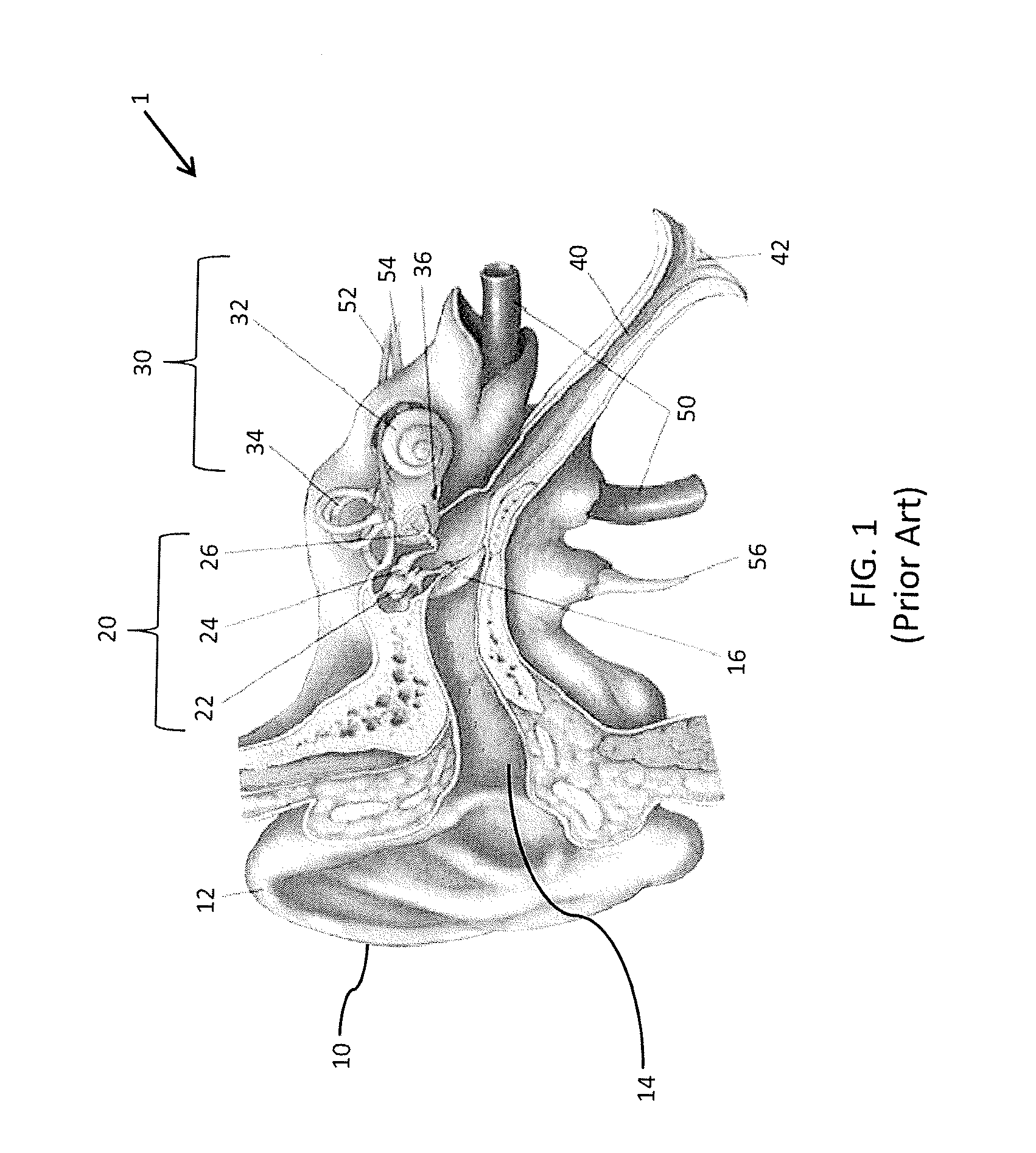Visualizing sound with an electro-optical eardrum
a technology of electro-optical eardrum and visualizing sound, applied in the field of hearing systems, can solve the problems of not being able to use the existing devices summarized above in an educational setting to demonstrate hearing, educators have not addressed many of the problems, and have not addressed the problems of inadequately, to da
- Summary
- Abstract
- Description
- Claims
- Application Information
AI Technical Summary
Benefits of technology
Problems solved by technology
Method used
Image
Examples
example
[0038]The following example is included to more clearly demonstrate the overall nature of the invention. This example is exemplary, not restrictive, of the invention. The example refers to FIGS. 4-6. In FIG. 4, the system 100 (illustrated, for example, in FIG. 2A) is depicted at equilibrium. In FIG. 5, the system 100 is depicted at the maximum amplitude of the membrane 114 (FIG. 2) when it deforms according to Mode (0, 1) (the top left image of FIG. 3). In FIG. 6, the system 100 is depicted at the maximum amplitude of the membrane 114 when it deforms according to Mode (1, 1) (the top right image of FIG. 3).
[0039]Referring to FIG. 4, the center C of the mirror 116 is placed at an equal horizontal distance L between the screen 210 and the laser pointer 310. The mirror 116 has a diameter m. The laser pointer 310 is placed at a height H above the center C of the mirror 116. The laser pointer 310 is oriented so that the light 314 emitted by the laser pointer 310 reaches the center C of t...
PUM
 Login to View More
Login to View More Abstract
Description
Claims
Application Information
 Login to View More
Login to View More - R&D
- Intellectual Property
- Life Sciences
- Materials
- Tech Scout
- Unparalleled Data Quality
- Higher Quality Content
- 60% Fewer Hallucinations
Browse by: Latest US Patents, China's latest patents, Technical Efficacy Thesaurus, Application Domain, Technology Topic, Popular Technical Reports.
© 2025 PatSnap. All rights reserved.Legal|Privacy policy|Modern Slavery Act Transparency Statement|Sitemap|About US| Contact US: help@patsnap.com



